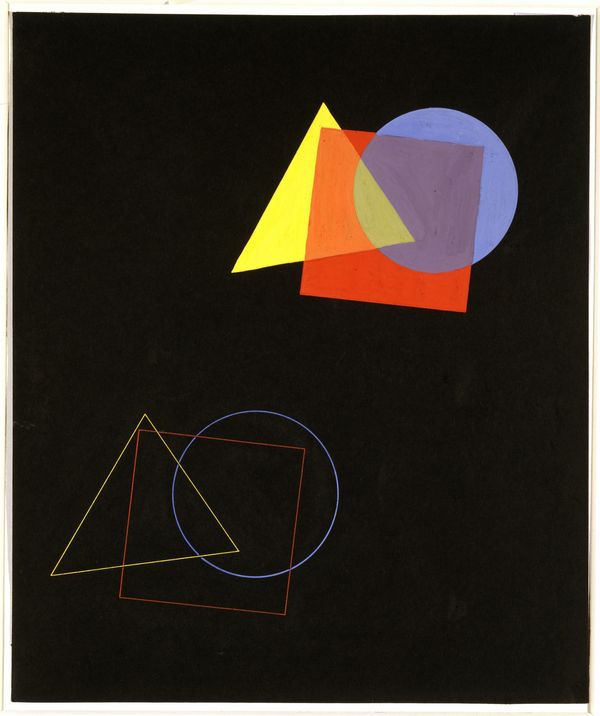
Origins
Suddenly, seemingly from nowhere, Bauhaus has seen a huge resurgence in popular culture. From its humble origins in the late 19th century, this movement has firmly earned its place in the creative history of man.
The term Bauhaus is actually a German compound noun comprising of ‘Bau’ from ‘Bauwerk’ – translated as any free standing structure made by humans, and ‘Haus’, simply meaning house.
The founders of Bauhaus had become deeply concerned by the soullessness of mass modern manufacturing and feared arts loss of social relevance was to further remove passion and creativity from daily life. Bauhaus aimed to reconnect fine art and functionality by creating practical concepts and objects with the soul of artworks – whilst inspiring a new age of creative individuals.
The foundations of Bauhaus are built on the concept that art, design and technology can change and improve the lives of everyone, not just the privileged, educated and wealthy.
A Method of Education
The Bauhaus teaching method abandoned many aspects of traditional fine-arts education, nonetheless it was seen as vital to ensure the deep-rooted theoretical approaches to creativity were not lost during this modernist movement. Various aspects of artistic and design pedagogy were combined, and the assumed hierarchy of the arts which had stood in place during the Renaissance was flattened: the practical crafts – architecture and interior design, textiles and carpentry – were placed on a par with fine arts such as sculpture and painting.
This theory was further re-enforced by its re-conceptualisation of the artistic process as more akin to science than a humanities subject, such as history or literature. The Bauhaus was experimental and as a result, the school became the very embodiment of its’ own beliefs and core principles. Creatives, artists and designers (whether students or masters) lived and worked side by side, in a manifested creative utopia.
Early Creation
A fantastic example of the efficiently catalysed creative environment that the school harboured was, young prodigy Marcel Breuer of Hungary, the engineer minded 18 year-old was one of the first students at the Bauhaus in 1920. By 1927 he had created what would become symbolic of the era, the ‘Club Chair (Model B3). His take on the classic upholstered ‘club chair’ design of the nineteenth century drawing room was a sleek amalgamation of curving, overlapping stainless steel tubes, with taught rectangular fabric panels making the backrest and seat pad.
For Breuer, a keen cyclist, he found himself fascinated by his bicycle’s curved handlebars and simply asked why the same principles of engineering were not used in static furniture. The design was revolutionary making him the first furniture maker to feature a bent steel frame in domestic design. The colloquial name for the chair honours the expressionist painter Wassily Kandinsky, who admired the piece when he first saw it Breuer’s studio.
Wassily Kandinksy
Whilst no longer considered the pinnacle of ‘fine art’ Kandinsky began teaching at the Bauhaus in 1922. He was one of the principle tutors of the preliminary course where he introduced students to the analysis of primary colours and the nature of their interaction; by this time his work had moved nearer to a purer form of abstraction.
Whilst working as a tutor in 1923, hoping to establish an underlying qualitative relationship between particular shapes and colours, he developed a questionnaire where participants were asked to fill in a triangle, square, and circle the most appropriate RYB primary colour. The outcome of this study was of great interest with an overwhelming consensus of the following arrangement; yellow triangle, red square, and blue circle becoming the classic Bauhaus Motif synonymous with the movement.
Standing the Tests of Time
So how does Bauhaus influence modern design and what exactly is it’s legacy for the 21stcentury man? The reality is a more sensible question to pose is what hasn’t Bauhaus influenced? As one of the founding fathers of modern minimalism, which is still one of the most popular styles to date, Bauhaus helped the design world step away from the ornate designs of the early 20thcentury with its emphasis on function before form.
Other leading styles, like Scandinavian, industrial and mid-century modern are unmistakable in their deep-rooted Bauhaus influence with accents and developments reflecting today’s culture. In many senses, by the very nature of the way in which creativity is seen as a combined art form, the Bauhaus principles live on at the heart of modern design and innovation.
This influence has become so entrenched in the design world, that what were once unusual and striking designs, are now so familiar we might miss them if we don’t take a step back to really look at them under the ‘macro-scope’.











